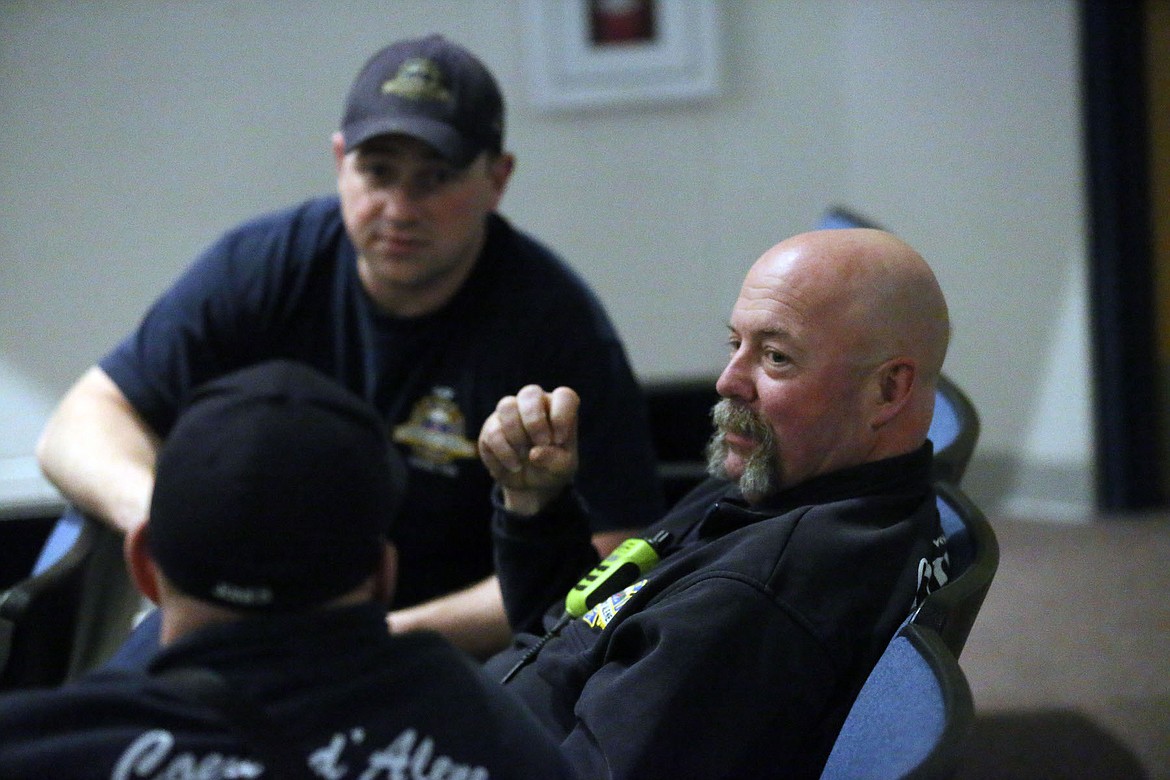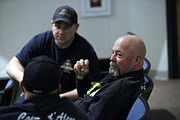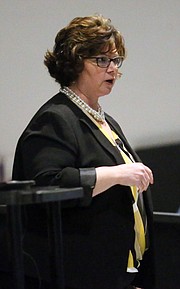Shining light into dark places
COEUR d’ALENE — QPR is like CPR, said Carlana Coogle at Coeur d’Alene High School Thursday night. “Anyone can learn to do it.”
Coogle, who serves as nursing practice and research coordinator at Kootenai Health, described people who use QPR as as beams of light bursting the impenetrable darkness of suicidal despair. QPR was developed by Spokane psychologist Dr. Paul Quinnett of the QPR Institute.
The inevitability of suicide is a myth, Coogle said.
“If someone is thinking about suicide, they want to share that. They want you to help them,” she said. “You’re not giving them the idea if you ask them.”
Directly asking someone about suicide lowers anxiety, opens up communication and lowers the risk of an impulsive act, she said. However, people have a hard time actually saying the word ‘suicide,’ she said. It’s as difficult as talking about sex, Coogle said with a laugh. How you ask the question is not as important as asking it. Allow the person to talk and bear with long, awkward silences. “Sometimes people need time to process,” she explained. Ask directly, don’t just ask about “hurting yourself,” she said. Suicidal people may not intend to hurt themselves, but they do intend to kill themselves. Also don’t ask “You’re not suicidal, are you?” The typical response will be “No” because the respondent will tell the questioner what he wants to hear, said Coogle. Listen and give your full attention. Lastly, if you can’t ask the question, find someone who can.
Suicide is not the problem, said Coogle, it’s only the solution to a perceived insoluble problem. Interviews with people who failed in suicide attempts reveal that they wanted to live.
“They can only see so far ahead of themselves.” Bring in hope for them, she said. “They want to seek that out” but just can’t see it for themselves, she said. Whatever makes them hopeful, latch onto it. If they feel it’s important, that’s OK, even if it’s something that seems unimportant like a football team or a dog, she said.
Take the person directly to someone who can help. Get a commitment from that person that he will accept help, and make arrangements. Any willingness to accept help is a good outcome, Coogle said. If the person’s seeming willingness to get help at some point in the future doesn’t sit right with your gut, tell the person that, Coogle said.
“People are generally willing to listen to you because they feel that you care,” she said.
For the last 20 minutes of the session, participants role played asking one another about suicide, persuading, and referring to professional help. Coogle said relating your own story of getting help can be beneficial, but only after you let the other person talk and avoid making the conversation about yourself, she said.
According to the QPR Institute, Idaho ranks eighth-highest in the nation for rates of suicide. A 2017 survey of Idaho high schoolers showed that 21.7 percent were suicidal and 9.7 percent had attempted suicide, with 3.2 percent surviving and requiring medical care afterward. The QPR Institute data showed that for each 1,000 students in a school, 159 will seriously consider suicide, 13 will plan how to do it, eight will attempt suicide, and two or three will receive medical care afterward.
Men aged 85 and up are really at high risk, Coogle said, with suicide rates of 78.3 per 100,000 people in Idaho from 2012-16. Men aged 45-54 are the second-highest category, with 49.4 per 100,000 taking their lives.
Coogle shared statistics from an Idaho suicide prevention hotline that received more than 9,500 calls and texts in 2017. The age group with the largest number of contacts was 35-44-year-olds, who made more than 1,000 calls and texts, almost half of them in the last quarter of the year.
QPR depends in part on human intuition, better known as your “gut feeling,” said Coogle. Listen to your gut and speak up when you feel someone needs some light in their lives, she exhorted the audience. What they need is hope. The first thing she says to emergency room patients who have survived suicide attempts is, “I am so glad you’re here.”





